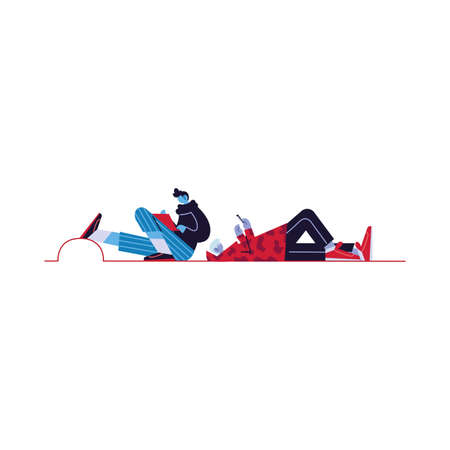1. Understanding Ultralight Nutrition Needs
When you’re heading into the American backcountry with ultralight ambitions, your food strategy isn’t just about cutting weight—it’s about fueling high-output days with smart, efficient nutrition. First, let’s break down your calorie requirements. Most backpackers burn anywhere from 3,500 to 6,000 calories per day, depending on terrain, pack weight, and personal metabolism. Underestimating this leads to bonking; overestimating just weighs you down.
Calorie Density: Your Secret Weapon
To keep your pack light, target foods that deliver at least 120-150 calories per ounce. This means prioritizing fats (like nuts, nut butters, olive oil) and complex carbs (dehydrated meals, instant rice, tortillas) over bulky, water-heavy items. Forget the “diet” mentality—this is about survival performance.
Macronutrient Balance for Endurance
Aim for a split of roughly 50-55% carbohydrates for quick energy, 30-35% fats for sustained fuel, and 15% protein to repair muscle. Carbs power steep climbs and long days; fats stave off hunger and keep you going through cold nights; protein keeps your engine running smooth.
Hydration in the Wild
Don’t overlook hydration: dehydration is a silent killer in dry Western ranges or humid Appalachian forests. Plan for at least half a liter of water per hour during strenuous activity. Electrolyte powders or salt tabs can keep cramping at bay without lugging extra liquid weight.
Dialing in these fundamentals lets you hike farther, recover faster, and stay sharp when conditions get gnarly. Ultralight nutrition isn’t about deprivation—it’s about precision and resilience on America’s wildest trails.
2. Gear Up: Essential Ultralight Food Tools & Containers
When it comes to ultralight backpacking, every ounce counts—especially in your food kit. Choosing the right tools and containers can mean the difference between a comfortable trek and a grueling slog. Here’s what you need for efficient, high-energy nutrition on the trail, while staying compliant with American backcountry regulations.
Minimal Cook Systems: Cut Weight, Not Performance
Ultralight food planning starts with paring down your cook kit. Most US backpackers opt for one-pot systems or cold-soak setups to save fuel and reduce bulk. Consider these top options:
| System | Weight (oz) | Best For |
|---|---|---|
| Titanium Pot + Alcohol Stove | 7-10 | Hot meals, boiling water fast |
| Coffee Can + Esbit Tabs | 5-7 | Simplicity, emergency use |
| Cold Soak Jar (HDPE or PP) | 2-4 | No-cook meals, minimal gear |
| Spoon/Spork (Titanium or Plastic) | <1 | Universal eating tool |
Most American thru-hikers skip frying pans or mugs—your pot doubles as both. Ditch unnecessary extras and focus on multi-use items.
Bear-Proofing: Stay Legal and Safe in Bear Country
The United States has strict bear-proofing regulations in many wilderness areas—especially in the Rockies, Sierra Nevada, and Appalachians. Ignoring them risks hefty fines or worse: losing your food to a black bear or grizzly. The best options include:
| Bear-Proof Solution | Approx. Weight (oz) | Regulatory Compliance |
|---|---|---|
| Bear Canister (Garcia/BearVault) | 32-44 | NPS/USFS required in many areas |
| Ursack Major Bear Bag | 7-13 | Accepted in some but not all parks* |
| PCT-style Hang with Dry Bag & Cord | <6 | Only legal where canisters aren’t mandated |
*Always check local regulations before heading out—rules change frequently.
Packing Efficiency: Make Every Inch Count
The key to ultralight food packing is compression and organization. Use sturdy zip-top bags for meals, repackaging bulky store packaging at home. Stack flat items vertically in your bear canister or Ursack to maximize space, and stash snacks for easy access at the top of your pack. Label everything with permanent marker—no more mystery meals after day three.
Pro Tips for Packing Like a Pro:
- Avoid glass containers—plastic or titanium only.
- Remove all excess packaging before you hit the trail.
- Squeeze air out of bags to prevent punctures and save space.
- If using a bear canister, practice packing it full at home—it’s like Tetris for survivalists.
- Tape a small list of meal plans to your lid for quick reference mid-storm.
Your Survival Edge:
The right tools keep your food safe from wildlife and weather—and keep you fueled when it counts most. Don’t skimp here: invest in gear that’s proven on American trails and meets every regulation from Yosemite to Yellowstone.

3. DIY Meal Planning: High-Energy, Low-Weight Staples
Calorie-Dense Food Choices for Ultralight Backpackers
When it comes to ultralight backpacking in the US, your food choices can make or break your loadout. Every ounce counts, so focusing on high-calorie, low-weight foods is critical. Whether you’re planning a thru-hike on the Appalachian Trail or tackling a weekend in the Rockies, your meal plan should maximize energy while minimizing pack weight and prep time. Below are key staples and strategies that work for American backpackers.
No-Cook Essentials
No-cook meals are perfect for fast-moving hikers who want to avoid using fuel or waiting for water to boil. Go-to options include:
- Tortillas & Nut Butters: Whole wheat tortillas paired with single-serving packets of peanut or almond butter deliver protein and healthy fats without cooking.
- Trail Mix: Combine roasted nuts, dried fruit, chocolate chips, and pretzels. Opt for calorie-heavy nuts like macadamias and pecans—readily available at Walmart or Costco.
- Jerky & Hard Cheeses: Beef jerky (or plant-based alternatives) and vacuum-sealed cheddar or gouda offer protein and fat with minimal spoilage risk.
- Energy Bars: Clif Bars, RXBARs, and ProBars pack 200–400 calories per bar and are easy to stash anywhere in your pack.
Dehydrated & Freeze-Dried Solutions
If you have access to hot water, dehydrated meals are a gold standard for ultralight nutrition. Some options include:
- DIY Dehydrated Meals: Use a home dehydrator to prepare chili, pasta sauces, or rice dishes. Store in zip-top freezer bags—just add boiling water in camp.
- Instant Oatmeal Packets: Choose oatmeal mixed with powdered milk, freeze-dried fruit, and nuts. These are cheap and widely available at Kroger or Safeway.
- Couscous & Instant Rice: These grains hydrate quickly with minimal fuel and pair well with olive oil packets (grab-and-go from any Subway).
Commercial Ultralight Options
The US market is loaded with commercial backpacking meals specifically designed for gram-counters:
- Mountain House & Backpacker’s Pantry: These brands offer freeze-dried entrees that average 500–800 calories per pouch for less than 5 oz dry weight.
- Skratch Labs Energy Chews & GU Gels: Lightweight sources of quick carbs for long days on trail.
- Pemmican Bars & Epic Meat Bars: High-fat, protein-rich options based on traditional American frontier foods—great for keto-friendly hikers.
Tactical Tips
Always repack bulky items into zip-top bags to save space and reduce trash. Carry small bottles of olive oil to boost calories in any meal—one tablespoon nets over 100 calories. For resupply stops in US towns, look for nut butters, tortillas, tuna packets, instant potatoes, ramen noodles, dried fruit, and candy bars as staples. With these strategies dialed in, you’ll keep moving light—and fueled—for every mile ahead.
4. Resupply and On-Trail Adaptation
Keeping your pack light while staying fueled on long American trails like the Pacific Crest Trail or Appalachian Trail is all about nailing your resupply strategy. Ultralight backpackers know that the best nutrition plan is only as good as your ability to adapt and restock without hauling a weeks worth of food at once. Heres how to master resupplies, box planning, and improvising with whatever the next trail town has to offer.
Smart Resupply Box Planning
Mailing yourself resupply boxes is a staple move for many ultralight hikers. It lets you guarantee calorie-dense, lightweight foods and avoid being at the mercy of small-town store selections. Here’s what goes into an effective resupply box:
| Item Type | Examples | Why Include? |
|---|---|---|
| Dehydrated Meals | Mountain House, homemade vacuum-sealed meals | High calories, low weight, quick prep |
| Energy Bars | Clif Bars, ProBars, RXBARs | No-cook energy, easy to eat on the go |
| Nuts & Trail Mix | Almonds, peanuts, custom mixes | Densest calories per ounce |
| Squeeze Packs | Nut butter, honey, olive oil packets | Packs a calorie punch in tiny packages |
| Coffee/Drink Mixes | Instant coffee, electrolyte tabs | Mental boost & hydration support |
Packing Tips:
- Pack each day’s food in individual bags for easy rationing.
- Add a list of towns with post office hours—many close early or on weekends.
- Toss in a treat: morale matters after 100+ miles!
Grocery Store and Gas Station Improvisation
No box? No problem. Most trail towns have at least a small grocery or gas station mini-mart. While options can be limited, knowing how to build a high-energy kit on the fly is essential for ultralight efficiency. Focus on calorie-dense, no-cook staples found almost anywhere:
| Aisle/Section | Ultralight Picks |
|---|---|
| Baking Aisle | Tortillas (vs. bread), peanut butter jars or packets, honey bear bottles |
| Deli/Cooler Section | Hard cheeses (last several days), summer sausage, boiled eggs (eat first) |
| Snack Aisle | Candy bars (Snickers = hiker classic), trail mix, jerky sticks, potato chips (crush into dinners) |
| Canned Goods (optional) | Tuna/chicken packets (avoid cans if possible), instant soup packets |
| Beverage Section | Coffee singles, electrolyte drink mixes, chocolate milk (for immediate calories) |
Pro Tips for On-Trail Adaptation:
- If you’re stuck with heavy items (like canned beans), eat them on the first day out of town.
- Always check expiration dates—small stores rotate stock slowly.
- If it’s hot, skip chocolate and melt-prone snacks.
- Dont overlook dollar stores for cheap nuts and dried fruit packs.
The Art of Flexibility: Adapting to Real-World Conditions
The best ultralight food plan bends but doesn’t break. When boxes get lost or stores run low on options, prioritize energy density over variety and don’t hesitate to swap out favorites for what’s available. Train yourself to spot high-calorie-per-ounce foods in any shop and keep an open mind—sometimes that oddball snack becomes your new trail favorite. Stay light, stay fueled, and always adapt to what the American trail throws at you.
5. Safety, Allergies, and Specific Diets
American Food Safety in the Backcountry
When planning ultralight meals for the trail, American backpackers must keep food safety front and center. Our climate varies wildly from humid Appalachia to arid deserts, so always consider how temperature and humidity affect your food’s shelf life. Stick to commercially packaged dehydrated meals or vacuum-sealed homemade recipes for peace of mind—these options reduce spoilage risk and help avoid foodborne illness. Never store perishable foods like cheese or meat unrefrigerated for more than a few hours, even if you see others doing it online. Carry hand sanitizer, wash your hands before eating, and use clean utensils every time. In bear country, always pack a bear canister or hang your food properly; don’t let poor storage invite wildlife—or fines—from rangers.
Managing Food Intolerances and Allergies on Trail
If you’re dealing with allergies or intolerances, ultralight doesn’t mean unsafe. Peanut allergies? Skip the classic PB&J—try sunflower seed butter or coconut-based snacks instead. Gluten-free? Plenty of instant rice noodles, polenta packets, or corn tortillas work well and weigh little. Always check ingredient lists carefully; cross-contamination is a real threat in many mass-produced hiking foods. For severe allergies, bring an EpiPen (or two) and tell your hiking partners about your condition—don’t assume they know what to do in an emergency. Pro tip: separate allergy-safe foods in their own zip bags, labeled clearly.
Adapting Ultralight Nutrition for Special Diets
Vegetarian & Vegan Options
Plant-based hikers can easily meet protein needs by packing dehydrated beans, lentils, or soy products like TVP (textured vegetable protein). Add olive oil packets for calorie density and flavor without excess weight.
Keto/Low-Carb Strategies
Keto backpackers should focus on shelf-stable fats: single-serve coconut oil pouches, hard cheeses (short-term), jerky sticks, and nut butters are all high-calorie and low-carb. Avoid grains and most dried fruits.
Paleo-Friendly Choices
Paleo purists should prioritize dehydrated meats, dried fruits without added sugar, nuts, and seeds. Steer clear of energy bars packed with oats or processed ingredients—even when calories are king.
In Summary
Your ultralight nutrition plan is only as good as its safety—and inclusivity—for everyone on the trek. With a careful eye on labels, smart substitutions, and rock-solid storage habits, American backpackers can fuel up safely no matter their dietary restrictions.
6. Real-World Ultralight Food Hacks from American Trails
Trail-Tested Strategies from the Ultralight Community
If you want to go light and last long, listen to those who have burned thousands of miles under their boots. American thru-hikers and ultralight backpackers are relentless tinkerers, constantly refining what goes into their food bags. Their hard-earned hacks can give you that extra edge when every ounce counts and hunger is a constant companion.
The Power of Cold Soaking
Forget carrying a stove if you’re truly shaving grams. Many seasoned hikers have embraced “cold soaking”—rehydrating instant meals like couscous, ramen, or oats in a leak-proof jar as you hike. It’s not gourmet, but it’s calorie-dense, fast, and saves fuel weight. Veteran Appalachian Trail (AT) hikers swear by this trick for summer treks.
DIY Energy Mixes: Custom Fuel on the Fly
Skip store-bought bars and make your own “trail mix bombs.” Combine nuts, dried fruit, crushed tortilla chips, peanut butter powder, and chocolate chips for a calorie punch that packs small and hits hard. West Coast PCT hikers often toss in coconut flakes or freeze-dried berries for variety without bulk.
Repurposing Gas Station Finds
Don’t overlook convenience stores at trail towns. American backpackers are masters at field improvisation—snagging tortillas (ultra-packable), tuna packets, jerky, or squeezable mayonnaise for high-calorie wraps assembled on the go. These staples are cheap, everywhere, and perfect for resupply along major U.S. trails.
Insider Pro Tip: Go Heavy Early
Packing your heaviest foods at the start lets you enjoy fresh produce or cheese before it spoils while steadily lightening your load each day. Pacific Northwest hikers often start with apples or summer sausage for days one and two—then transition to lighter dried foods as the trip progresses.
Maximize Efficiency with Resealable Bags
Use quart-size freezer bags for meal prep—just add hot (or cold) water directly into the bag, eat straight from it, then pack out your trash. This cuts down on dishwashing gear and keeps your camp streamlined—a classic trick of Colorado Rockies veterans who prioritize speed and stealth.
The Bottom Line: Adapt and Overcome
No plan survives first contact with the trail. Learn from the old hands: stay flexible, improvise with what you find, and always prioritize dense calories over empty weight. That’s how America’s ultralight elite keep moving strong—mile after mile.


